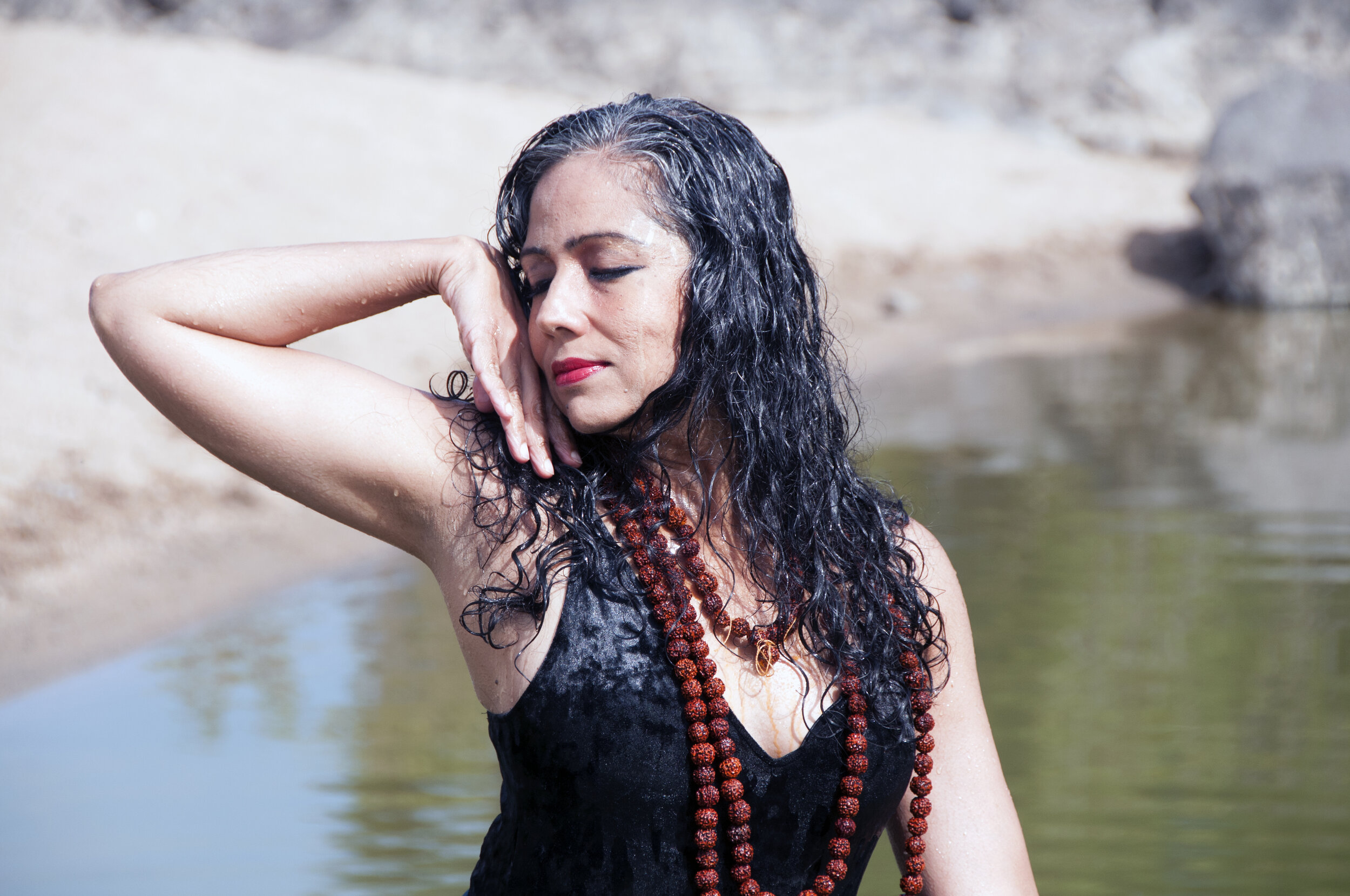Pleasure, courtesans and dance contemplation
Image: Siva by Barbie Robinson for “Siva in Me” book
Kaama, which is lust for pleasure, is what shapes action. To inquire into Kaama is therefore vital in one’s contemplative practice. The power of Kaama is acknowledged in the assertion that it is the most powerful of human drives, more powerful than the intellect and the mind. Kaama has to be studied in all its dimensions—in those drives that are legitimised by convention as well as in those that are rejected by the prevailing morality of the time. Kaama is not just sexual desire, but sexual desire is the most intimate and embodied experience of this drive. It is the self-same lust that underpins our powerful lust for pleasure at all times. This lust overcomes the best of our intellect and shapes our “knowledge” into paradigms of self-interest and profit.
Contemplation in dance is inextricably linked to Kaama as it deals with aesthetics and consequently with fulfilment of pleasure. Dance contemplation recognises that it is Kaama that is the site of transformation and that it can only be transformed through its own language. The traditions of courtesan dances in Indian temples functioned on multiple dimensions in this Kaama domain. Courtesans (sometimes female temple dancers and sometimes young men dressed as women when they danced) were materially the custodians of Kaama as they separated desire from all other social structures such as marriage and family. They were also explicitly stated to be masters in all the arts, and therefore aesthetics was inextricably an attribute of this domain. It was through their mastery of aesthetics that that they seduced people into the Kaama world. The objects of their seduction were not only humans; the deities were also lured by the power of the courtesans. This is the only way in which the deity and the devotee become each other—as Mirabai sang, “Krishna you become me and I am you.”
The elaborate treatment of the courtesan space in the Natya Sastra text on Indian dance is inevitable not just because of the courtesan traditions of dancers but also because one could not dance without a deep inquiry into the nature of Kaama. Shringara, the archetypal experience of desire when it is transformed into dance contemplation, is considered the highest of Rasas or archetypal emotional states. Shringara transforms the instrumental dimensions of Kaama into unconditional sensuousness, beauty and pleasure. However, we cannot experience Shringara without a deep understanding of the nature of Kaama.
The courtesan dance space is where we delve into the dynamics of Kaama as aesthetic pleasure that is drenched in the sensuousness and beauty of shringara but is free from the constraints of convention. Like so many contemplative spaces, Kaama in this practice is also situated outside our normal frameworks of life, inviting us to consider this powerful driver fearlessly and truthfully.
Kaama as the sexual act is a widely used archetype for the relationship between perception and reality. The act of perception is intimately and passionately embedded in the materiality of nature, action and the body. It is the powerful desire between the two domains that brings them into union where the duality vanishes.

